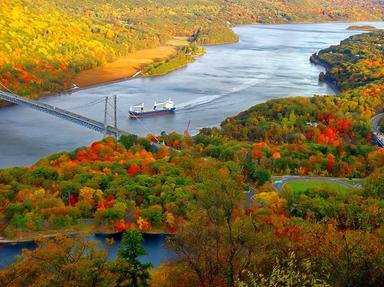Quiz Answer Key and Fun Facts
1. In which area of Russia does the Volga River rise?
2. Into which body of water does Africa's Congo River empty?
3. The biggest and most important waterway in China is the Yellow River. For centuries, the people have referred to this river by which title?
4. The Mekong River, one of the great rivers in south-east Asia, rises in which area of the world?
5. The Nile is not the only river in the world to flow northwards. The Yukon River also flows northwards for a considerable part of its 3,200 mile length. One of the tributaries that flows into this river is named after a small animal. Do you know which one?
6. Australia's Murray River, which is over 1,600 miles long, forms the border between which of two Australian states?
7. The 2,740 mile long Euphrates River is no longer what it used to be in days of old when many giant civilisations depended on it for transport, trade and agricultural production. In which country does it begin its long journey that eventually ends in the Persian Gulf?
8. The 2,000 mile long Tocantins River in Brazil is named after which beautiful and unusual bird?
9. Which is Scotland's third largest river (depending on how they are measured), one that became famous for ship building, including that of the ships, Queen Mary and Queen Elizabeth II?
10. The Columbia River has a lot of twists and turns and changes of directions along its 1,200 mile long journey. In particular, what geological feature is the reason behind the river's great bend west before it resumes its journey south again?
Source: Author
Creedy
This quiz was reviewed by FunTrivia editor
Pagiedamon before going online.
Any errors found in FunTrivia content are routinely corrected through our feedback system.

